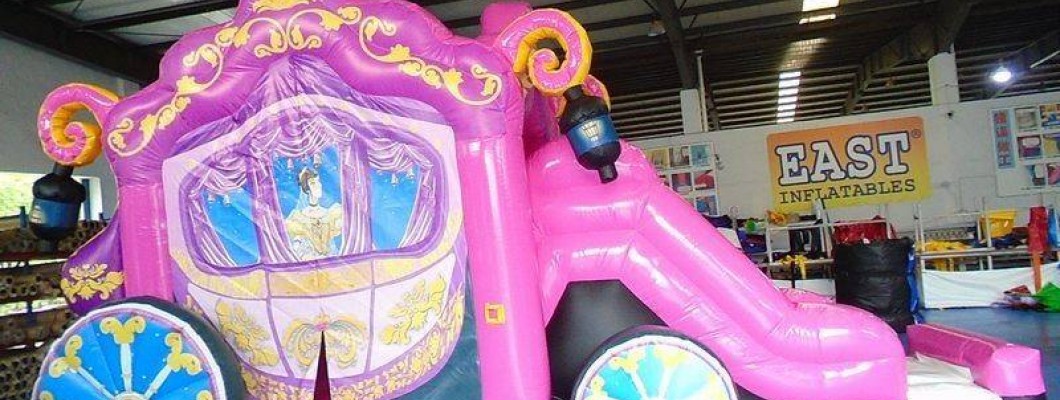
An inflatable bouncy castle, also known as an inflatable bounce house or inflatable jumper, is typically made using a combination of durable materials and specialized manufacturing processes. Here's a general overview of how an inflatable bouncy castle is made:
1 Design and Concept: The process begins with the design and concept phase. Engineers and designers create a blueprint or digital model of the inflatable bouncy castle, specifying its size, shape, features, and safety elements.
2 Materials Selection: High-quality materials are chosen for the construction of the inflatable. PVC (polyvinyl chloride) or similar strong and flexible materials are commonly used due to their durability and ability to hold air. The selected materials should be resistant to tearing, puncturing, and UV damage.
3 Cutting and Sewing: Large pieces of fabric are cut according to the design pattern of the bouncy castle. These pieces are then sewn together using heavy-duty industrial sewing machines. The seams need to be strong and airtight to ensure the structure retains air pressure.

4 Reinforcements and Anchoring Points: Additional layers or patches of material are added to reinforce high-stress areas such as corners, entrance ramps, and bouncing surfaces. Anchoring points, where stakes or ropes will be attached for stability, are also reinforced.
5 Inflation Tubes and Air Distribution: Inflation tubes or air chambers are integrated into the design to ensure proper inflation. These tubes are strategically placed to evenly distribute air pressure throughout the structure.
6 Air Blowers and Inflation: The bouncy castle is inflated using powerful air blowers that continuously pump air into the inflatable. The air pressure keeps the structure rigid and allows it to maintain its shape.
7 Safety Features: Safety features such as netting windows, cushioned barriers, safety entrances, and escape routes are integrated into the design to prevent accidents and ensure children's safety while playing.

8 Quality Control and Testing: Each inflatable bouncy castle undergoes rigorous quality control and testing procedures. This may include air pressure testing, seam strength testing, and overall structural stability assessments.
9 Accessories and Graphics: Accessories like climbing walls, slides, obstacles, and colorful graphics are often added to enhance the play experience and aesthetics of the bouncy castle.
10 Packaging and Transportation: Once the bouncy castle is manufactured and passes quality checks, it is deflated, folded, and packaged for transportation. The inflatable is usually shipped with an air blower and necessary accessories.
11 Setup and Operation: When the bouncy castle reaches its destination, it is set up by attaching the air blower and inflating the structure. Proper anchoring and securing are essential to ensure stability during use.
It's important to note that the manufacturing process may vary among different manufacturers, and safety standards and regulations must be followed to ensure the inflatable bouncy castle is safe for children to use. Proper maintenance, regular inspections, and adherence to manufacturer guidelines are crucial for maintaining the safety and longevity of the inflatable bouncy castle.




Leave a Comment